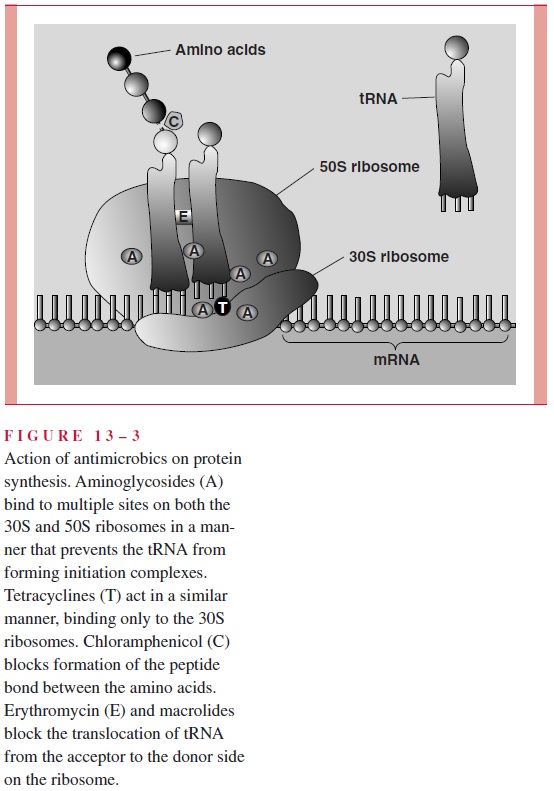Chapter: Medical Microbiology: An Introduction to Infectious Diseases: Antibacterial and Antiviral Agents
Glycopeptide Antimicrobics - Antimicrobics That Act on Cell Wall Synthesis
Glycopeptide Antimicrobics
Two agents, vancomycin and teicoplanin, belong to this group. Each of these antimicro-bics inhibit assembly of the linear peptidoglycan molecule by binding directly to the ter-minal amino acids of the peptide side chains. The effect is the same as with β-lactams, prevention of peptidoglycan cross-linking. Both agents are bactericidal, but are primarily active only against Gram-positive bacteria. Their main use has been against multiresistant Gram-positive infections including those caused by strains of staphylococci that are resis-tant to the penicillinase-resistant penicillins and cephalosporins. Neither agent is absorbed by mouth, although both have been used orally to treat Clostridium difficile in-fections of the bowel .

Inhibitors of Protein Synthesis (Fig 13 – 3)
Related Topics